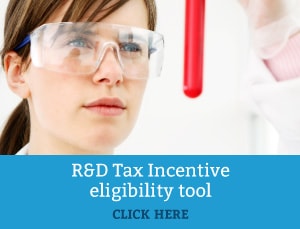Australian Business Investment In R&D Has Fallen
November 24th, 2017
According to the OECD Science, Technology and Industry Scoreboard 2017 and Australian Bureau of Statistics, Australian spending on research and development was down from 2.11 percent of GDP in 2013-14 to 1.88 percent in 2015-16, with the OECD average being 2.38 percent. Chief Executive of Universities Australia Belinda Robinson said that this represented a stark warning against government research cuts, which would put future jobs at risk.
Research and development involve producing new and improved products, technologies, and processes or ‘knowledge-based capital’ and is a crucial driver of long-term economic gain. The government is key in supporting R&D through investment as it involves a high degree of risk for companies, with gains often not seen for several years.
A meeting between the Group of Eight universities and peer organizations next week will discuss how to defend long-term research in an environment demanding immediate solutions. Governments must keep in mind the planet’s future – areas such as climate change and food sustainability are critical areas that will need funding over long periods in order to find solutions.
The OECD report found that government R&D budgets have declined or stagnated in many OECD countries. Not for all though; Turkey has increased its R&D budget by almost 80 percent since 2008 and the British Government has recently announced an extra US$3 billion for R&D investment. In Australia, government support for business R&D is high, with R&D budgets increasing by 9 percent between 2008 and 2016.
In addition to direct funding, innovation is encouraged through indirect support like R&D tax incentives. Australia is one of the top countries for claiming R&D tax incentives, with claims totaling US$2.3 billion. R&D tax incentives are a key tool for promoting business R&D. In Australia, companies with a turnover of under $20 million can receive a refundable offset of 43.5 percent and businesses with a turnover of over $20 million can receive a non-refundable offset of 38.5 percent for eligible expenditure. Businesses can find out whether they qualify here.
Categories
- ATO Guidance and Materials
- AusIndustry Guidance and Materials
- Case Law
- Federal Budget 2021
- Federal Budget 2022
- For Accountants
- General Information
- Government Policy and Treasury
- Industry Specific Issues
- Interpretative Decisions
- Legislation and Parliamentary Matters
- R&D Tax Credit
- R&D Tax Funding Strategies
- R&D Tax Loans
- Recent News
- Tax Determinations
Archives
- April 2024
- March 2024
- February 2024
- January 2024
- December 2023
- November 2023
- October 2023
- September 2023
- August 2023
- July 2023
- June 2023
- May 2023
- April 2023
- March 2023
- February 2023
- January 2023
- December 2022
- November 2022
- October 2022
- September 2022
- August 2022
- July 2022
- June 2022
- May 2022
- April 2022
- March 2022
- February 2022
- January 2022
- December 2021
- November 2021
- October 2021
- September 2021
- August 2021
- July 2021
- June 2021
- May 2021
- April 2021
- March 2021
- February 2021
- January 2021
- December 2020
- November 2020
- October 2020
- September 2020
- August 2020
- July 2020
- June 2020
- May 2020
- April 2020
- March 2020
- February 2020
- January 2020
- December 2019
- November 2019
- October 2019
- September 2019
- August 2019
- July 2019
- June 2019
- May 2019
- April 2019
- March 2019
- February 2019
- January 2019
- December 2018
- November 2018
- September 2018
- July 2018
- June 2018
- May 2018
- April 2018
- March 2018
- February 2018
- January 2018
- December 2017
- November 2017
- September 2017
- August 2017
- July 2017
- June 2017
- May 2017
- April 2017
- March 2017
- February 2017
- January 2017
- December 2016
- November 2016
- October 2016
- September 2016
- August 2016
- July 2016
- June 2016
- May 2016
- April 2016
- March 2016
- February 2016
- January 2016
- December 2015
- November 2015
- October 2015
- September 2015
- August 2015
- July 2015
- June 2015
- May 2015
- April 2015
- March 2015
- February 2015
- January 2015
- November 2014
- October 2014
- September 2014
- August 2014
- July 2014
- June 2014
- May 2014
- April 2014
- March 2014
- February 2014
- January 2014
- December 2013
- November 2013
- October 2013
- September 2013
- May 2013
- April 2013
- March 2013
- September 2012
- August 2012
- June 2012


 Free Call: 1300 009 390
Free Call: 1300 009 390





 News & Research
News & Research



